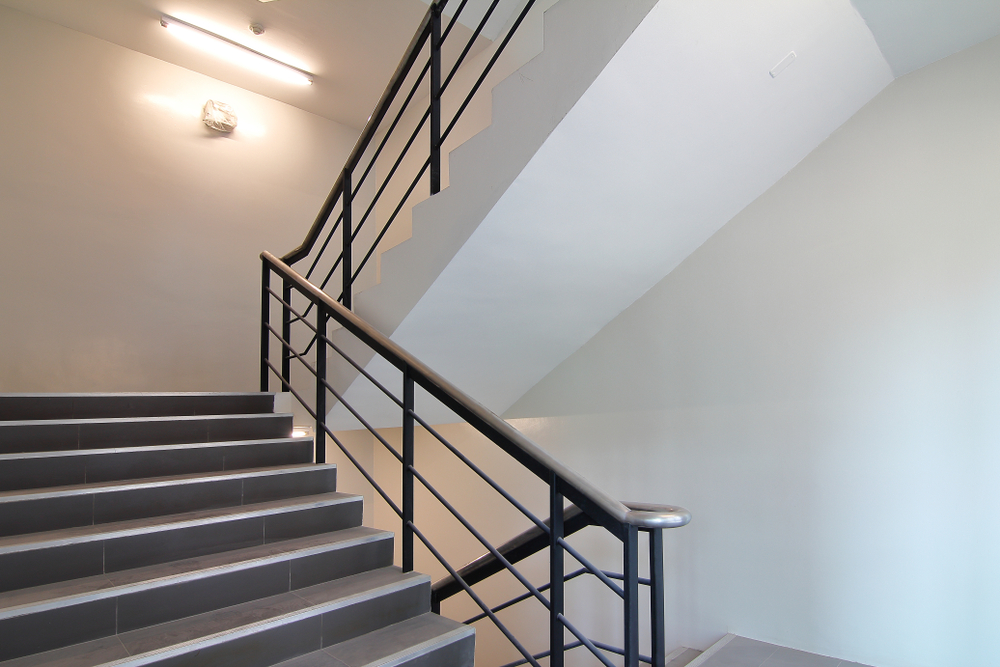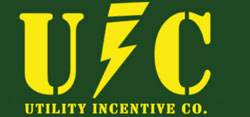How Motion Sensors and Timers Can Optimize Stairwell Lighting in San Diego

In today’s fast-paced world, the emphasis on energy efficiency is stronger than ever. One area that often goes overlooked is stairwell lighting, which can be a significant energy drain if not managed properly. Whether in residential buildings, commercial spaces, or parking structures, stairwells must be well-lit for safety and accessibility, but they don’t need to be illuminated at full brightness 24/7. The use of motion sensors and timers offers a highly effective solution for this. This blog will explore how stairwell motion sensor lighting in San Diego can help optimize energy usage, save costs, and improve safety, all while promoting sustainability.
The Need for Efficient Stairwell Lighting
Stairwells are often one of the most underused spaces in any building. Unlike common areas such as lobbies or hallways, stairwells typically don’t see continuous traffic. However, building codes mandate that these areas remain well-lit for safety and emergency situations. Continuous lighting, while essential for security, can lead to wasted energy and inflated utility bills, especially in high-rise buildings or facilities with multiple staircases.
In a city like San Diego, where sustainability and energy efficiency are top priorities, automated stairwell lighting systems provide an ideal solution. By integrating motion sensors and timers, property owners can achieve a balance between safety, energy savings, and cost efficiency.
What Are Motion Sensors and Timers?
Motion Sensors
Motion sensors detect movement and trigger the lighting system to turn on when someone enters a specific area. In the context of stairwells, motion sensors can be strategically placed to detect people walking up or down the stairs, ensuring the lights are only activated when needed. When no movement is detected after a set period, the lights can automatically dim or turn off, reducing unnecessary energy consumption.
Timers
Timers, on the other hand, allow the lights to be turned on or off at preset times or after a defined period of inactivity. When combined with motion sensors, timers can ensure that the lights remain on for a reasonable amount of time after detecting movement before they turn off or dim.
Together, these devices form a smart system that ensures the stairwell is lit when needed while conserving energy during periods of inactivity.
Benefits of Stairwell Motion Sensor Lighting in San Diego
1. Significant Energy Savings
One of the most significant advantages of stairwell motion sensor lighting in San Diego is the energy savings. In a typical building, stairwells are often left illuminated 24/7, wasting a substantial amount of electricity when no one is using them. Motion sensors ensure that lighting is only used when necessary, significantly reducing energy consumption. According to studies, using motion sensor lighting can cut energy costs by up to 90% in stairwells.
In addition, when combined with timers, stairwell lights can be dimmed to lower brightness levels during off-peak hours, such as late at night or during periods of low occupancy. This offers another layer of energy savings without compromising safety or visibility.
2. Improved Safety
While energy savings are crucial, the primary function of stairwell lighting is to ensure the safety of those using the stairs. Automated stairwell lighting systems can enhance safety by ensuring that lights come on the instant someone enters the stairwell. Modern motion sensor technology is highly responsive and can detect movement quickly, ensuring that no one is left in the dark while navigating the stairs.
Timers can also be set to keep the lights on for a sufficient period, ensuring that they don’t turn off too soon, providing a safer experience for everyone, especially in emergency situations where reliable lighting is critical.
3. Reduced Maintenance Costs
Traditional stairwell lighting systems often rely on fluorescent or incandescent bulbs that need to be replaced frequently due to continuous use. Over time, this results in increased maintenance costs. By integrating motion sensors and timers, the overall usage of stairwell lights is reduced, extending the lifespan of bulbs and fixtures. This means fewer replacements, reduced labor costs, and less frequent maintenance, ultimately saving property managers and building owners money.
4. Customizable Solutions for Various Building Types
Stairwell motion sensor lighting systems can be tailored to suit different types of buildings and needs. Whether it’s a residential building, a commercial office space, or an industrial complex in San Diego, the lighting system can be customized to align with occupancy patterns and usage frequency.
For example, in high-traffic buildings, the lights may be set to remain on longer after detecting movement, while in buildings with low stairwell usage, they can turn off more quickly after the stairwell is vacated. The system’s flexibility ensures maximum energy efficiency without sacrificing the convenience or safety of occupants.
5. Contribution to Sustainability Goals
San Diego is known for its focus on sustainability, with initiatives such as Climate Action Plan pushing for greener, more energy-efficient building practices. By adopting energy-saving lighting controls, property owners can contribute to the city’s sustainability goals. Motion sensor and timer-controlled lighting systems align with these initiatives by reducing energy consumption and lowering the building’s overall carbon footprint.
Moreover, buildings with energy-efficient lighting systems may qualify for rebates or incentives through local utility companies, further driving down the cost of upgrading to automated lighting systems.
Applications of Automated Stairwell Lighting in San Diego
Residential Buildings
In apartment complexes or condominiums, stairwells are often overlooked areas when it comes to energy efficiency. However, these spaces can greatly benefit from automated stairwell lighting systems. By using motion sensors, lights can turn on only when residents enter the stairwell, conserving energy during off-peak times such as late at night or during the day when many occupants are away from home.
Commercial Buildings
For commercial office spaces, motion sensors and timers are essential in reducing energy usage during off-hours. Many office buildings in San Diego operate on a 9-to-5 schedule, meaning stairwells may see little to no traffic outside of these hours. Automating stairwell lighting ensures that energy isn’t wasted while still maintaining a safe and accessible environment for late-night workers or cleaning staff.
Parking Structures
Parking garages often have multiple levels of stairwells, and lighting these spaces continuously can be a significant energy drain. Implementing motion sensor lighting in parking structures can drastically reduce energy consumption while ensuring that stairwells remain well-lit when people need them. Timers can be programmed to keep lights on longer during peak parking times and dim them during quieter hours.
Key Considerations for Installing Stairwell Motion Sensor Lighting
1. Sensor Placement
Proper sensor placement is crucial to ensure the motion sensors work effectively. In stairwells, sensors should be positioned at entry points and landing areas where people are most likely to pass. This ensures that the lights turn on as soon as someone enters the stairwell and remain on while they are using the stairs.
2. Timer Settings
Timers should be set according to the building’s typical usage patterns. In high-traffic areas, it’s a good idea to set the timer to keep the lights on for a few minutes after motion is detected to avoid frequent on/off cycles, which can be distracting or inconvenient for users. For low-traffic stairwells, shorter time intervals can be used to maximize energy savings.
3. Light Dimming vs. Full Shutoff
In some cases, it may be beneficial to use light dimming rather than a full shutoff when no movement is detected. This provides a soft glow in the stairwell, ensuring visibility while still reducing energy consumption.
Conclusion
The integration of motion sensors and timers into stairwell lighting in San Diego offers a powerful solution to optimize energy usage, reduce costs, and improve safety. With significant energy savings, reduced maintenance, and customizable solutions, automated stairwell lighting is an essential upgrade for any building aiming to enhance its sustainability efforts while maintaining safety standards. By adopting energy-saving lighting controls, San Diego property owners can not only reduce their environmental impact but also contribute to the city’s broader goals of creating a greener, more efficient urban environment.
Need a Lighting Company in California?
Since 2003, we here at Utility Incentive Corp. have been the premier provider of energy efficient electrical services in San Diego and the surrounding areas. We are a privately owned and operated business with 20 years of experience. Our friendly and professional staff work in conjunction with other businesses to provide them with better solutions at little to no cost to property owners.
We focus primarily on relamping and retrofitting T12 lamps and ballasts to “Energy Star” T-8 lamps and “flicker free” ballasts. Our other services include a free initial consultation, energy audit, and utility application. Give us a call today to see why we have installed and replaced over 175,000 fixtures across California!
